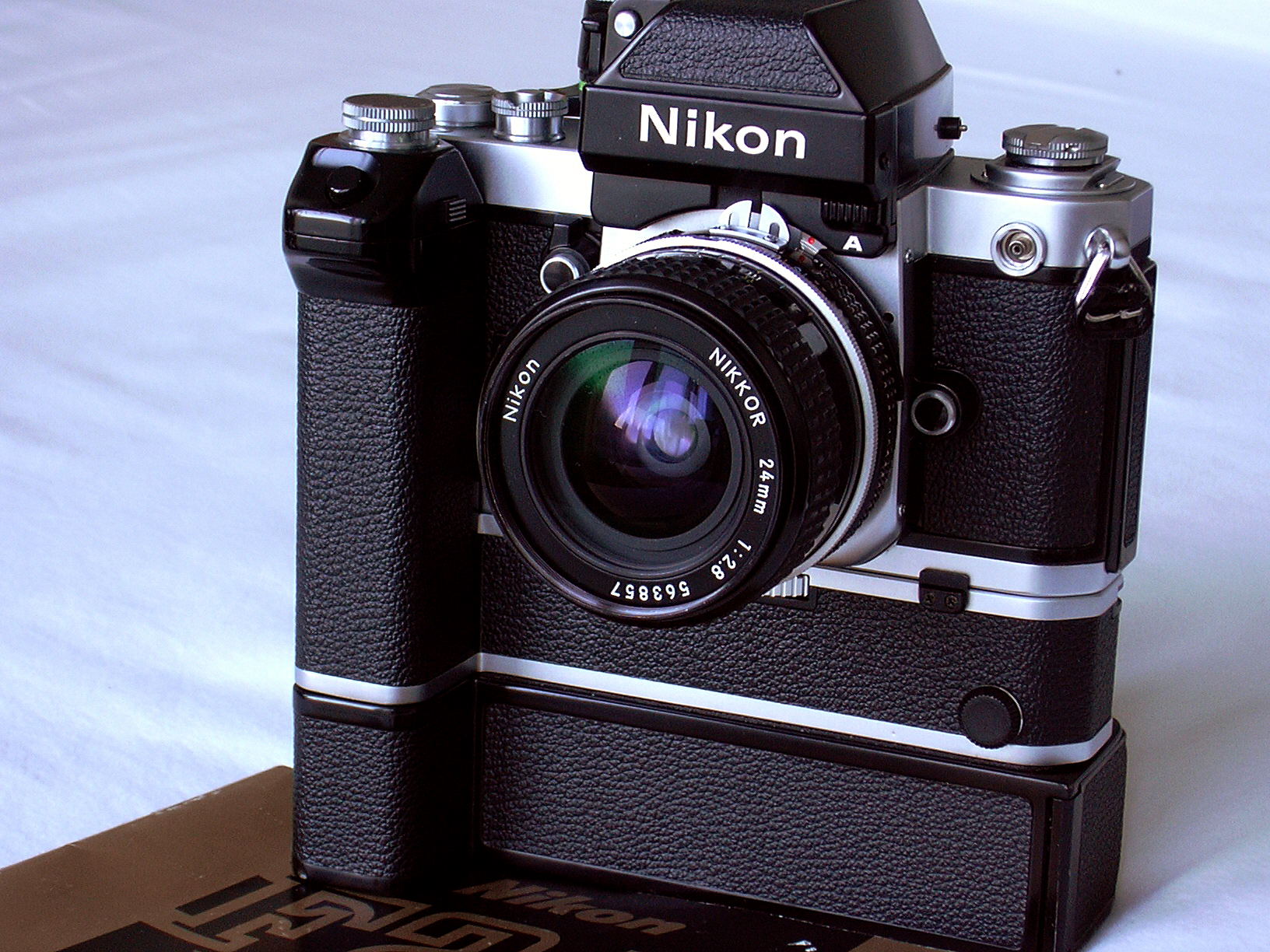Nikon Corporation introduced the Nikon F4 in 1988 - its 4th generation F-series flagship camera model after the original Nikon F (1959), Nikon F2 (1971-1980) and Nikon F3 (1980-2001). The F4 spearheaded a new generation of operational ease and functionality in.

- The Nikon F camera was produced between March 1959 and October 1973. The very first serial number was 6400001 and upon Japanese publications the last serial number was 7451052 (Peter Braczko, Nikon Pocket Book, July 1994, page 4-7: «The last serial numbers of the Nikon F production are 7451048 in chrome and 7451052 in black finish.»).
- The serial numbers on Nikon F2 camera bodies. One source claims that the first two digits represent the year of manufacture. Another source reports that the second digit indicates if the body is chrome or black. What is the REAL story here?
- Body serial numbers began with 7850001, e.g. Approximately 400 units were produced making the F2H extremely rare, the rarest of any 'production model' F2, and valuable. As the name implies, the F2 Data had a primitive data back. It used a tiny internal flash unit to imprint the time, date or sequential number on the film.
Where To Find an How to Check Nikon Lens Serial Numbers
Now that you have some understanding about serial numbers you might be curious about how to check Nikon lens serial numbers on your own Nikon lens. Serial numbers can be found in different places on your lens. They do not have a standard location, but they are fairly easy to find. Just have a look at your Nikon lens and scan the surface. The serial number can be easily found because it is usually printed in white to help it stand out from the black lens. Some might be found on the body of the lens while others are on the glass. Have a look around and you will eventually find the serial number. If you are having trouble with finding the serial number on your lens due to the numbers being scratched out from wear and tear, check the original box it came in. The box will usually include the lens’s serial number.What To Do With A Nikon Lens Serial Number
Most people only pay attention to the lens’s serial number when they bring it in for repairs or when the lens is stolen. Although those are the important times to really have a look at your Nikon lens serial number, there are ways to check Nikon lens serial numbers online. You can find websites that can give you helpful information about your Nikon lens. Information like production date, status of production, whether or not the model has been discontinued and other interesting facts about the Nikon lens you own are available if you know where to look. Another major benefit of finding the serial number on your Nikon lens is to check to see if you have bought an original product or a fake. With so many fake products on the market, you cannot be too sure if you have purchased an original Nikon lens or a fake one. With a serial number, you can double-check with Nikon to see if the lens you have is an original.Nikon F2 Serial Numbers And Production Dates

Nikon Camera Serial Numbers
Conclusion
Nikon F Serial Number
Check your Nikon lens for the serial number and try searching for it online. There isn’t a large database available, but you can find a lot of information. If you are suspicious about the new Nikon lens you bought because the serial number doesn’t look right, contact the seller or check with Nikon to confirm. A serial number might just look like a bunch of numbers, but those numbers mean something, so it’s worth knowing how to check Nikon lens serial numbers. The introduction of the Nikomat series on the market in 1965 triggered an additional surge in the demand for high-end SLR (single-lens reflex) cameras, after which SLR cameras reached the zenith.
We, at what then was Nippon Kogaku K.K., phased out of producing the unprofitable popular models and placed emphasis on production and sales of high-end models. Nikon F, the leading model of high quality SLR cameras, played the driving role in changing the policy and contributed to an increase in sales.
In April 1967, Nikon F Photomic TN went on sale as a successor to Nikon F Photomic T (released in September 1965); following the redesign of the Photomic T finder assembly and changing the exposure measurement system from averaged brightness measurement to center-weighted metering, which concentrates the meter's sensitivity on the center of the picture frame (φ12 mm).
This model evolved into Nikon Photomic FTN in September 1968, featuring an expanded metering range (giving the exposure time of 4 seconds at T shutter speed) and an easier way to set the maximum aperture when changing lenses.